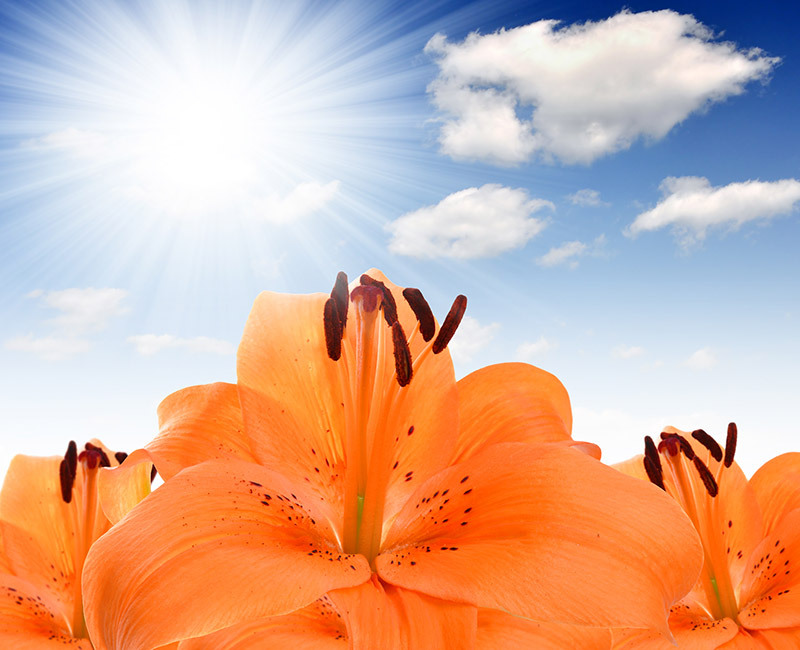Discover the Enchanting Secrets Hidden in Tulip History
Posted on 03/07/2025
Discover the Enchanting Secrets Hidden in Tulip History
Tulips are among the world's most beloved flowers, their vibrant colors and elegant shapes gracing gardens, art, and celebrations throughout centuries. Yet, behind their universal beauty lies a history rich with intrigue, exploration, fortune, and mystery. Unveiling the hidden stories of tulip history is like stepping into a world of ancient empires, passionate collectors, and profound symbolism. In this comprehensive article, we invite you to discover the enchanting secrets hidden in tulip history, from their mystical origins to their dramatic economic impact and lasting cultural influence.

The Intriguing Origins of the Tulip
Many people assume tulips originated in the Netherlands, but the true history is far more intricate and captivating. Let us journey into the heart of their beginnings.
From Wild Fields to the Courts of Kings
- Tulips are native to Central Asia: Historically, tulips grew wild across the rugged and beautiful landscapes of the Tien Shan mountains, the steppe lands of Kazakhstan, and into Afghanistan and Iran.
- Adoption by the Ottoman Empire: By the 10th century, the tulip's splendor had caught the eye of the Turkish people. However, it was during the Ottoman Empire--especially the reign of Sultan Suleiman the Magnificent in the 16th century--that tulips gained special prominence. The flower became an obsession, symbolizing paradise on earth, perfection, and eternal life.
Records from this period describe lavish gardens bursting with tulips, exclusive tulip festivities, and even the strict regulation of rare varieties. Their Turkish name, lale, not only blended into poetry and art but even influenced the patterns of Islamic architecture.
The Secret Voyage to Europe
- Ambassadors and botanists: In the mid-1500s, tulip bulbs and seeds reached Western Europe via the botanist Carolus Clusius, who began cultivating them at the University of Leiden in the Netherlands.
- Botanical curiosity: The unique shapes and lively shades made tulips an instant sensation among Europe's scientific and upper classes, marking the dawn of a new era in flower cultivation.
Tulip Mania: The Economic Frenzy That Shook the World
No story about unveiling the hidden stories of tulip history would be complete without exploring the famous Tulip Mania. This chapter in tulip lore is so dramatic that it continues to fascinate economists, historians, and even psychologists.
The Rise and Fall of Tulip Prices
- Speculation begins: By the early 17th century, Dutch merchants, aristocrats, and commoners alike had fallen under the spell of tulips. Rare and uniquely patterned varieties, especially those displaying vivid stripes (later understood to be caused by a mosaic virus), became obsession-worthy commodities.
- Futures contracts and skyrocketing prices: People traded contracts for tulip bulbs months in advance, often at prices higher than a skilled craftsman's yearly wage. Some single bulbs were reportedly worth more than canalside mansions in Amsterdam!
- The dramatic collapse: In February 1637, confidence evaporated--the market crashed, leaving fortunes lost and lives upended in what is now regarded as one of the first recorded financial bubbles.
Tulip Mania remains a cautionary tale of excess and speculation but is also a testament to the flower's hypnotic power over human imagination.
Tulips in Symbolism and Art: The Language of Beauty
While tulips caused economic turmoil, their symbolic and artistic significance is equally remarkable. Let's peer into the enchanting secrets that bloom where art and tulip history intersect.
The Tulip Motif: From Persian Poetry to Dutch Masters
- Persian and Ottoman symbolism: In Sufi poetry, tulips represented divine love, with their delicate form expressing the pain and perfection of yearning. The Ottoman sultans incorporated tulips into courtly motifs, textiles, and architecture--most famously in the tiles of Istanbul's Blue Mosque.
- The Dutch Golden Age: As tulips captured the Dutch imagination, they began featuring prominently in still-life paintings by artists like Jan Davidsz. de Heem and Rachel Ruysch. These works immortalized the flower's beauty and the fleeting nature of luxury and life.
Hidden Meanings and Modern Symbolism
- Love and prosperity: In the Victorian language of flowers, tulips conveyed declarations of perfect love and abundance. Red tulips meant true love, while yellow ones represented cheer and hope.
- Renewal and resilience: Tulips' ability to endure harsh climates and return each spring has made them a global symbol of resilience and new beginnings.
The Spread and Hybridization of Tulips
Another lesser-known chapter in the mysterious history of tulips lies in their cultivation and endless variety.
From Wild Species to Garden Wonders
- Wild diversity: Botanists have catalogued roughly 75 wild tulip species, each with its own palette, shape, and blooming pattern.
- Art of hybridization: Through centuries of careful cross-breeding and bulb selection, hundreds of cultivated varieties now enchant gardeners and designers around the globe. Modern tulips can be ruffled, double-petaled, fringed, or even scented.
- Iconic Dutch cultivation: The Netherlands remains the epicenter of tulip breeding and production, with fields blooming in endless rainbows each spring--visible even from space!
The Enduring Tulip Festivals: Celebration of History and Renewal
A testament to the tulip's cultural and economic influence is the global proliferation of annual tulip festivals. These festivals serve as vibrant reminders of the enchanting secrets and hidden tales behind every bloom.
Famous Tulip Festivals Around the World
- Keukenhof Gardens, Netherlands: Often called the "Garden of Europe," Keukenhof showcases over seven million tulips each year, attracting more than a million visitors from around the world.
- Canadian Tulip Festival, Ottawa: Stemming from the gift of 100,000 tulips from the Dutch Royal Family during World War II, this annual event blends history, gratitude, and spectacular displays.
- Skagit Valley Tulip Festival, USA: In Washington state, thousands of acres burst into spectacular color, echoing the traditions of Dutch flower farming in the heart of North America.
Unsolved Mysteries and Hidden Stories
For those enchanted by tulip history, many intriguing questions still remain:
- The mysterious role of tulip-breaking virus: The striking feathered patterns in historic tulips are now known to be caused by a virus. Yet, early cultivators unwittingly treasured and propagated these "broken" blooms--adding both beauty and risk to their collections.
- Lost tulip varieties: Some rare historical cultivars have vanished, their genetic legacies lost to wars, floods, and the passage of time. Scientists and horticulturists continue to search for their descendants in remote fields and secret gardens.
Unlocking tulip secrets remains a pursuit that inspires botanists, historians, and garden lovers worldwide.
The Timeless Legacy of the Tulip
Discovering the enchanting secrets hidden in tulip history is about more than unearthing the past. It's celebrating the human capacity for wonder, passion, and resilience.
- Cross-cultural fascination: From ancient Persia and Ottoman palaces to Dutch art studios and global gardens, tulips link diverse worlds through shared admiration and ambition.
- Economic, artistic, and scientific impact: Tulips have shaped trade routes, inspired masterpieces, and advanced agricultural science through ongoing hybridization and conservation.
- Modern-day wonder: The legacy continues as people everywhere cherish tulip blooms in their own lives--gifting, growing, painting, and photographing them as messengers of hope and renewal.
As you stroll through a tulip garden, admire a painting, or give someone a single bloom, remember: Every tulip tells a story--a hidden history of empires, fortunes, love, and enchantment. The next time you catch sight of a tulip's breathtaking beauty, you'll know that you are gazing into the living petals of a remarkable legend.

Frequently Asked Questions About Tulip History and Secrets
Where did tulips originate?
Tulips are originally native to Central Asia, especially areas that are now Kazakhstan, Uzbekistan, and parts of Iran and Afghanistan. They became famous in Ottoman Turkey before captivating Europe.
What was Tulip Mania?
Tulip Mania refers to the period in 17th-century Holland when the prices of rare tulip bulbs soared to extraordinary heights before suddenly collapsing. It is considered one of the first recorded financial bubbles.
What do tulips symbolize?
Tulips have symbolized everything from perfect love, abundance, and true beauty to prosperity and renewal--varying by culture and color. Their role in art and literature only deepened these meanings.
Are any ancient tulip varieties still grown today?
While some varieties from the hottest days of Tulip Mania have vanished, enthusiasts and botanical gardens continue working to preserve and recover historic cultivars where possible.
Which country grows the most tulips now?
The Netherlands is the world's leading tulip producer, exporting billions of bulbs and hosting dramatic seasonal displays that honor the flower's extraordinary legacy.
Conclusion: Tulips--A Flower with Stories Yet to Bloom
Tulip history is an endless garden of curiosity--its hidden secrets awaiting discovery by everyone enchanted by the story of nature, culture, and commerce. From wild fields in Asia to imperial courts, from economic booms to modern-day festivals, the enticing journey of the tulip offers lessons in beauty, caution, and hope.
Next time you see a flutter of tulip petals in the spring breeze, pause for a moment. Within that simple bloom dwells a legend--one you've now begun to discover, uncover, and share.
Latest Posts
Learn the Art of Keeping Your Flowers Fresh and Beautiful
Birthday Cheer with Beautiful Flowers
Office Decor Magic: Transform with Low-Care Plants






